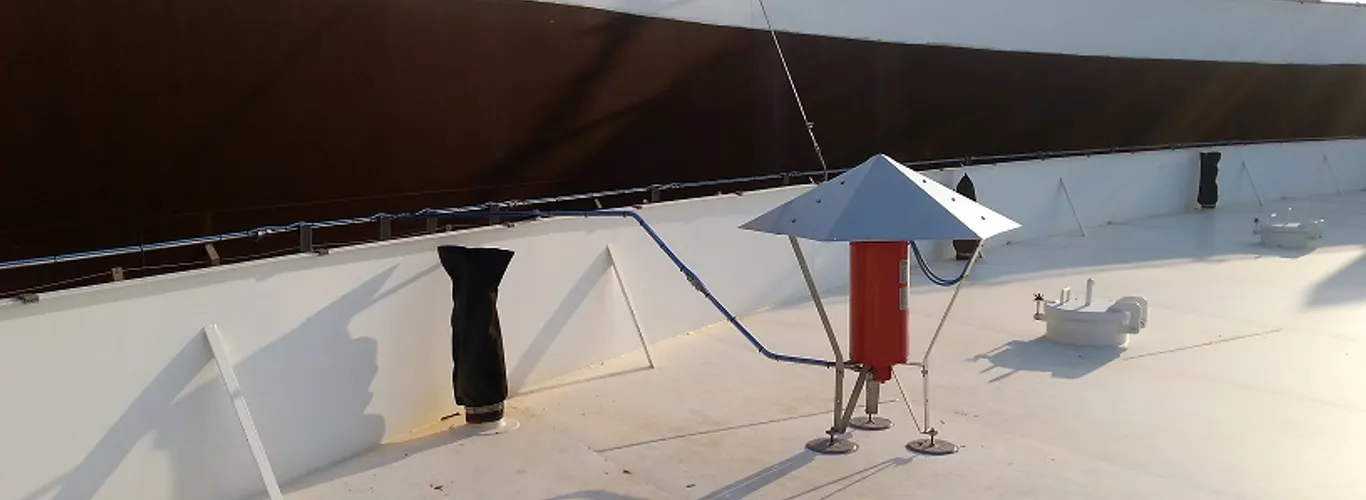
Rim-seal fires require a higher level of protection
Storage tanks are normally protected using AFFF foam. Large storage tanks with internal or external floating roofs are normally equipped with foam systems using “over the top foam pourers”. This system, based on international norms, floods the area between the floating roof and the tank wall (known as the rim seal area) with a blanket of foam.
The rim seal area is of a special interest to fire protection engineers for 3 reasons:
- 90% of fires start in the rim seal area
- It is the area prone to contact between flammable vapors and air
- Damaged rubber seals cause the exposure of combustible gases to the atmosphere and potentially start a fire
How do storage tank owners mitigate such risks? And how to tackle local extinguishment fast before the fire grows out of control?
Fire Protection for the Rim-Seal Area of Storage Tanks
Traditionally, a 34-minute response time between ignition and a covering foam blanket is generally accepted by the industry.
This response time consists of many elements such as:
- 1 minute for fire-detection using a separate system such as linear heat detection, pneumatic detection, or other systems.
- 2 minutes verifying the accuracy of detection (alarm, human communication)
- 8 minutes for the Fire Brigade to arrive and connect hoses.
- Given that everything works perfectly, 3 minutes to start extinguishing using connected equipment.
- 20 minutes to realize the covering foam blanket (NFPA 11).
The above scenario assumes that all components are well maintained; vapor free rim seal, fast and reliable fire detection, no human error in the fire alarm interpretation, efficient communication, fire brigade availability and training, accessibility to tanks, water availability, water pumps and foam pumps are well maintained and in good order, no corrosion of the risers, valves are opening, foam makers/pourers are correctly maintained, and finally acceptable weather conditions e.g. no wind turbulence, no dangerous lightning storms.
As can be inferred, a lot of time is needed for all these factors to come into play, and a lot of problems could happen. During this long period where every second counts, a rim seal fire can grow rapidly out of control, and an accident could end in catastrophic proportions if any of the above described factors fail to work as it is supposed to.
Are Automatic Foam Systems Quick Enough?
Alternatively, some customers choose an automatic foam system where foam is poured automatically to the appropriate storage tank through large diameter piping after the fire-alarm is initiated. This causes a decrease of extinguishing/response time to about 8-9 minutes which is a good reduction but is it enough?
There are circumstances when even a 25% response time reduction by automatic foam is not enough.
“Special Hazard conditions” take into consideration elements such as distance between the foam station and tank, proximity to inhabited communities, or the valuable refined content such as gas oil, jet-fuel, or naphtha. These conditions require an extremely fast and reliable extinguishment system without any collateral damage.
How Can Storage Tank Owners Mitigate Such Risks?
The Saval CFI system mitigates all the above risks by setting the extinguishing vessels and components on top of the floating roof as a local application to extinguish incipient fires quickly within 60-90 seconds of ignition.
Saval CFI systems are designed to eliminate risks and bring fires under control not in 20 minutes, or 8 minutes, but in seconds. These unique systems are specifically engineered for every individual storage tank and rim seal specifications. Appropriate operation is guaranteed by international independently verified fire-tests and approvals. Wireless communication between the storage tank and main Fire & Gas panel is also possible.
For more information please email us at info@structurus.com